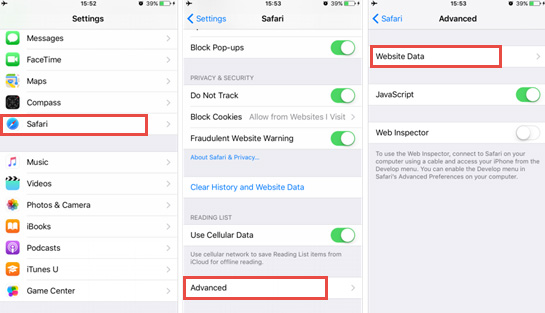Recover Deleted History Firefox Mac
Recovering Deleted FilesYour browser history is stored just like everything else on your computer, as a file (or collection of files). Clearing your browser history merely deletes these files from your hard drive. We’ve written a guide on that can be used to also recover your browser cache; you just need to know where your browser cache is stored.Internet Explorer: C:UsersAppDataLocalMicrosoftWindowsHistoryMozilla Firefox: C:UsersAppDataRoamingMozillaFirefoxProfilesGoogle Chrome: C:UsersAppDataLocalGoogleChromeUser DataDefaultIn all of those directories, replace with the name of the user whose history you wish to recover.
How can the answer be improved? Deleted browsing history last night. OS is mac os x 10.6. BROWSER is firefox 4.0.1. Please help to recover - Answered by a verified Mac Support Specialist. Deleted browsing history last night. OS is mac os x 10.6. BROWSER is firefox 4.0.1. Please help to recover browsing history. Thank you for the question. If you have deleted the.
Recover File Deleted From Server
Set your recovery software to scan those directories in order to recover history. If you try to browse to any of those folders, you may need to. Inspecting the DNS CacheYour computer uses, and these queries are temporarily stored in your DNS cache. When you clear your browser history, your DNS cache is not touched.To see the list of cached website lookups for your system:Open a command prompt by typing “cmd” into the start menu.Then, issue this command:ipconfig /displaydnsAs you can see in the screenshot above, the DNS cache reveals that we have visited howtogeek.com recently.
Now, there are a few big caveats to using this approach, so you can’t rely on it as catch-all method for viewing the sites you (or someone else) have visited. First off, your browser is not the only thing that can cause a DNS lookup to be cached. Application updates, instant messenger, video games, and just about any program you can think of that connects to the internet is going to be using DNS to lookup hostnames. When that’s done, it’s added to the cache the same way it would be if the site were accessed by your browser. To see this in action, try pinging a website that you haven’t recently visited, and then looking at your DNS cache.ping bing.comFollowed by:ipconfig /displaydnsYou’ll see bing.com (or whatever website you chose to ping) listed in the results, even though you haven’t actually visited that website.The second drawback with this approach is that you’ll never know the specific pages you visited on any given website, just that you visited the website itself.Clearing the DNS CacheAfter seeing just how easy it is to inspect someone’s DNS cache, you’re probably wondering how to clear it. Anytime your computer is restarted, the cache will be cleared.
Otherwise, you can run this command in the command prompt:ipconfig /flushdns Router LogsSome routers give you the ability to log all incoming and outgoing traffic. Every brand of router is going to be different, but this setting will most likely be disabled by default. On Linksys routers, you can pull up the settings (192.168.1.1 in your browser), and navigate to Administration Log.Poke around your router settings or consult the manual to find out if yours has the option to log connections, and how to enable it.Once enabled, you can view the log to see all established connections – you’ll want to filter by outgoing.Every single connection to your router is going to be listed in this log, so there can be a ton of information (a lot of it irrelevant), and the log can grow very huge very fast.
In this example, the router doesn’t resolve the IP addresses to hostnames. A reveals that this IP address belongs to How-To Geek, so we can deduce that our computer has accessed that website. What Doesn’t WorkThere is a lot of misinformation circulating the internet about ways to recover your browsing history, and a lot of them sound convincing, so you may be inclined to believe them at first. We put a few of the most common methods to the test, and here’s what we found:Using System RestoreUsing three different browsers, we went to a few different websites, and then created a restore point.


Recover Deleted History Safari
From there, we cleared the history and proceeded to perform a system restore, in hopes of recovering the history that we had just deleted.No dice. The browsing history wasn’t recovered for any of the three major browsers we tested: Internet Explorer, Firefox, and Chrome. This is touted as the go-to method in the majority of websites and forums, but it was just a big waste of time when we tried it.Index.dat FilesThere are an abundance of guides that tell you to locate index.dat files and use third party software to open and view them.

Index.dat files do indeed contain logs of websites visited, but they aren’t useful if the browsing history has been cleared.The biggest problem is that modern browsers no longer use index.dat files; the last browser to use them was Internet Explorer 9. So, we ran some tests with Internet Explorer 9, just to see if this method was useful for someone who’s running outdated software. Using, we were able to recover some browsing history, but after clearing it, the data inside the index.dat file disappeared.If you need to grab the browsing history off of a computer before it gets cleared, the index.dat file makes for a good repository of sites visited, but it’s useless if the history is cleared before you can get to it.
